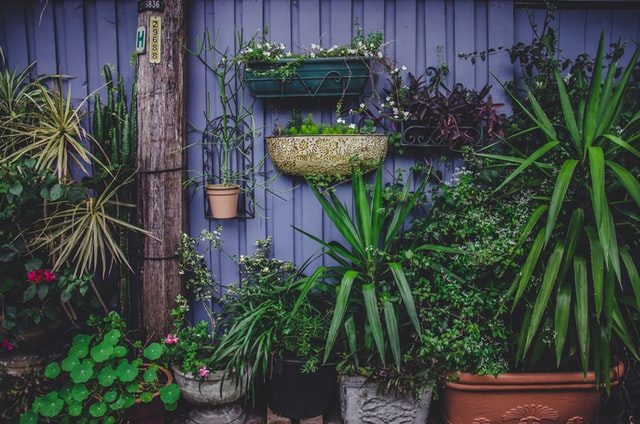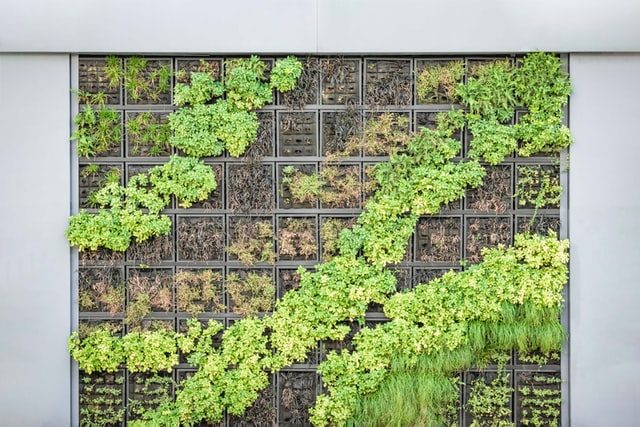When you think about gardening, you’re most likely picturing the traditional rectangle of earth outside with plants growing straight up out of the ground. There are actually many varieties of gardening suited to different living situations, and one that has seen a dramatic increase in popularity is vertical gardening. If you’re looking for some tips on how to start your own, or you’re currently choosing plants for vertical gardens and you require a little guidance, this article is for you!
What is vertical gardening?
Vertical gardening is a method of growing plants straight up, like a wall of plants. Vertical gardening is great if you don’t have access to a traditional garden space or if you’re just looking for something a little more interesting or unique. Vertical gardening is also very flexible in terms of size and effort. If you want something small, cute, and easy that can be kept indoors to brighten your home, you can have a vertical garden! If you want something big, complex, and artistic to serve as a conversation piece outdoors, you can also have a vertical garden! They really are what you make of them.
How do you make a vertical garden?

There are a lot of ways to create a vertical garden, and you can and should tailor your garden to the materials and space you have available. That being said, there are two main pieces to a vertical garden: The frame and the pots. The frame supports the entire garden, connects the pots to each other, and allows it to be either hung from somewhere or stood on its own. The pots are the compartments that hold the plants themselves.
Your first step is to decide where you want your garden to go, as that will dictate the materials you use, the size of your garden, and even the types of plants. An outdoor vertical garden will need to be built sturdier and protected from the elements. A vertical garden that’s hanging somewhere will need to be made with lighter, more flexible materials, and you’ll need to check both the surface the garden will hang on and the part of the garden that the rest of the garden hangs from to make sure they’re strong enough. The build itself can be as creative as you want it to be, but if that sounds intimidating, don’t worry — there are some simple ways to start.
For a freestanding vertical garden, a wooden frame is tried and true. You can construct a simple series of connected shelves or even use an old bookshelf. Your pots can be regular garden pots turned sideways, although you’ll want to make sure they’re the right size for your frame. A simple way to make a smaller hanging vertical garden is to use a shoe organizer. Whether your garden will be inside or outside, you’ll most likely want to do the planting outside. Otherwise, you can lay a sheet under your garden while you fill your pots with soil and plants to reduce the mess.
You can also forgo the frame altogether and make a more abstract vertical garden by attaching pots directly to a wall. This can be done in several ways. You can create small shelves that will support the pots without being directly visible or attach pots to your wall as if they were sconces.
What plants can grow in a vertical garden?

While any plant can technically grow for a short time in a vertical garden, the plants that can stay in a vertical garden full-time are plants with small but strong root systems and plants that climb. Vines typically do well, as do ferns and succulents. You can grow flowers such as orchids, morning glories, pansies, and verbena; vegetables like peas, tomatoes, and radishes; or focus on foliage with ferns, bromeliads, and pothos. You should consider where your garden is located when selecting your plants. Consider how much sun your garden will be getting, as well as the temperature of the area.
What herbs grow well in a vertical garden?
Similarly to flowering and vegetable plants, herbs that do well in vertical gardens are those that don’t need a lot of soil or space. The herbs that do best are basil, parsley, chives, dill, mint, thyme, oregano, marjoram, lemon balm, and cilantro. Rosemary can do well, especially when it’s young, as long as it is kept trimmed back. Rosemary can grow quite large under proper conditions, so if you choose to grow rosemary in a vertical garden, keep an eye on it. While the small space shouldn’t allow it to get too big, you may want to transplant it to another pot or an outdoor space if it starts to grow.
Vertical gardening is a great way to add interest to any space. It works in practically any location or area and can be adapted to fit any lifestyle or aesthetic. There are so many creative ways to make a vertical garden. Which way will you pick?



